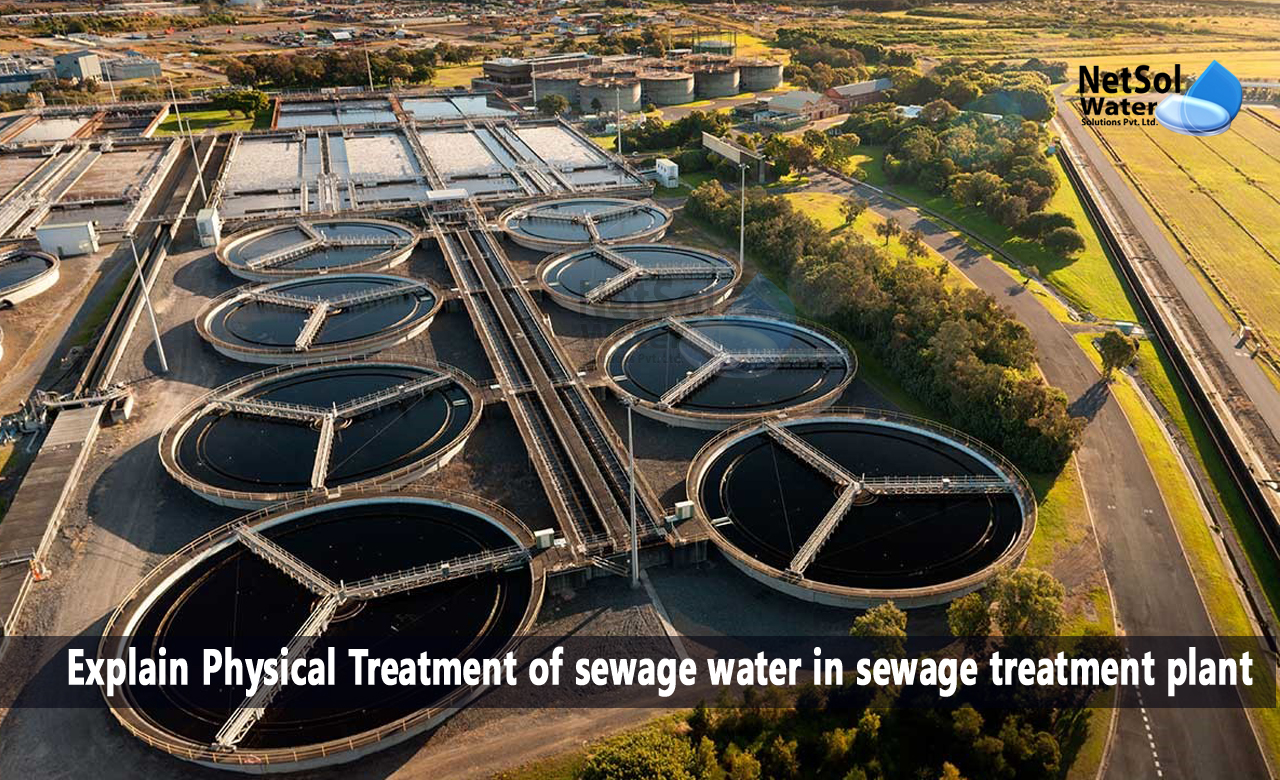Explain Physical Treatment of sewage water in sewage treatment plant
Sewage treatment is an essential process that ensures that the wastewater generated by human activities is adequately treated before being released back into the environment. The physical treatment of sewage water is the first stage of the sewage treatment process. It is designed to remove the larger particles and solids from the wastewater.
In this blog, we will explain the physical treatment of sewage water in a sewage treatment plant.
Sewage Treatment Plant
Before we delve into the physical treatment process, let us first understand what a sewage treatment plant is. A sewage treatment plant is a facility that processes wastewater generated by domestic, commercial, and industrial activities. The process involves several stages, including physical, biological, and chemical treatment.
Physical Treatment
The physical treatment process involves the removal of larger particles and solids from the wastewater. It is the first stage of the sewage treatment process, and it is designed to remove the solids that can clog pipes and damage equipment in the subsequent stages.
The physical treatment of sewage water is typically achieved through the following methods:
-
Screening
The first step in the physical treatment process is screening. This involves passing the wastewater through a series of screens or meshes that remove large debris such as plastic bags, bottles, and branches. The screens typically have openings of 6mm to 30mm, depending on the size of the facility.
-
Grit Removal
After screening, the wastewater is directed to grit chambers, where the heavier particles such as sand, grit, and stones are removed. These materials are abrasive and can cause significant damage to the equipment in the subsequent stages of the treatment process.
-
Sedimentation
The next step is sedimentation, where the wastewater is allowed to settle in large tanks or basins. During this process, the heavier solids such as human waste, food particles, and other organic matter settle at the bottom of the tank, while the lighter particles such as oils and fats float to the surface.
-
Skimming
After sedimentation, the floating particles such as oils and fats are removed through skimming. This involves using mechanical skimmers to scrape the surface of the water and collect the floating particles.
-
Flotation
Finally, the wastewater is subjected to flotation, where air is injected into the wastewater to create small air bubbles. The bubbles attach to the remaining solids and lift them to the surface, where they can be removed through skimming.
Conclusion
In conclusion, the physical treatment of sewage water is a critical process in any sewage treatment plant. By removing the larger particles and solids from the wastewater, the physical treatment process not only protects the equipment in the subsequent stages but also makes the treatment process more efficient and effective. This is because the physical treatment process significantly reduces the overall load of solids and contaminants in the wastewater, allowing for easier and more effective biological and chemical treatment processes. Ultimately, the physical treatment process is a crucial step towards ensuring that the wastewater is adequately treated before being discharged into the environment, protecting public health and the environment.
To get in touch with us and to relish the benefits of our services, call us at +91-9650608473 or send an email to enquiry@netsolwater.com



